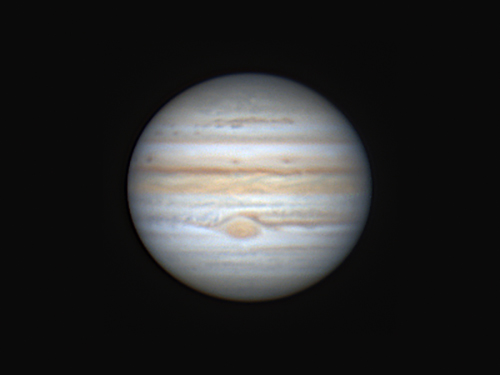
Telescope: Meade Mak 7 @ f/38, Orion Atlas EQ-G
Camera: ZWO ASI224MC, 2.5x Powermate
Filter: Meade IR cut filter
Seeing: fair, 3/5
Exposure 6x(3min x 50ms), gain 300, saved as SER
White Balance: Nebulosity Automatic
Software: SharpCap Pro, AutoStakkert, Registax, WinJUPOS, Nebulosity, Photoshop
I finally got an image of Jupiter that I am happy with, and once again it almost didn’t happen. I left my gear set up planning on switching over to deepsky imaging, but the transparency wasn’t cooperating so I decided to take one more set of source images of Jupiter. For this set I switched amplifiers from a GSO 2” 2x ED Barlow to a 2.5x Powermate and I swapped out an ASI294MC Pro for an ASI224MC. The uncooled 224 is smaller and lighter than the cooled 294 and has slightly smaller pixels. I was interested in the smaller pixels and not hanging the weight of a cooled camera on the end of the Powermate. The 224 had couple of hot pixels, but they processed out fairly well. The smaller pixels resulted in a high degree of over-sampling that I took advantage of by down-sampling the images by binning them 2×2. This did a great job taming the noise and still giving an appropriate image scale that was just a tad over-sampled. The next step will be to try an ASI462MC to take this approach of taking over-sampled source images and binning them 2×2 in post-processing one step farther and to give this a try on my C11 or C9.25 and down-select to which scope I’ll be using for the rest of this imaging season with Jupiter and Saturn.
Fun stuff!
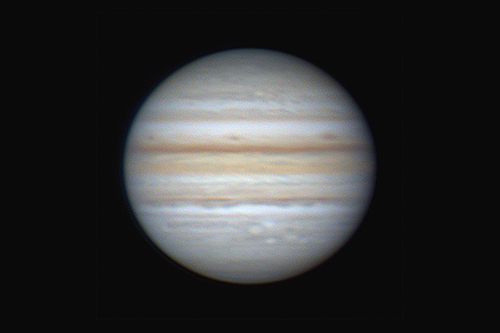
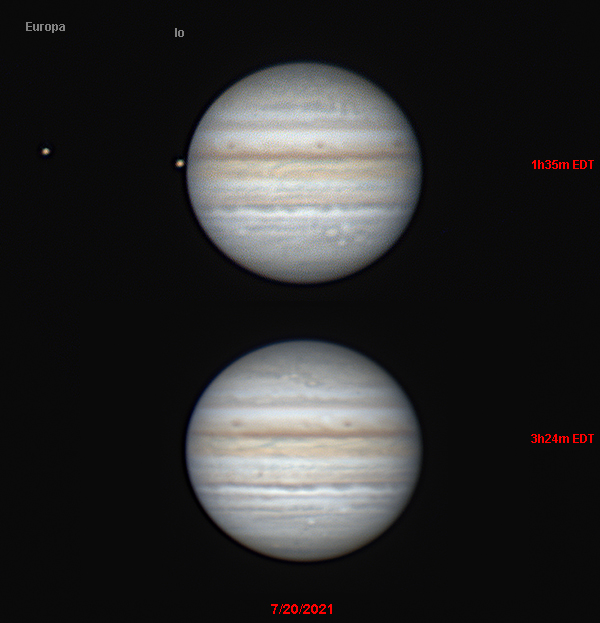
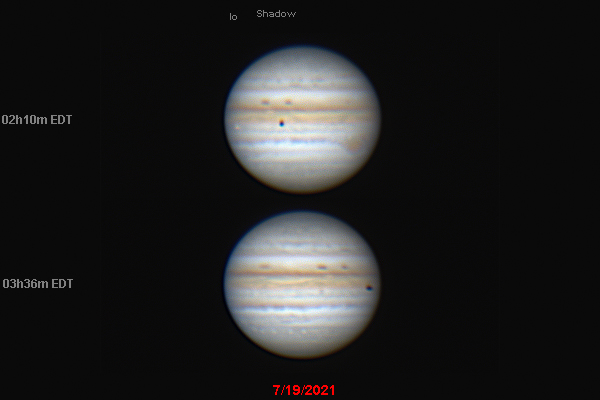
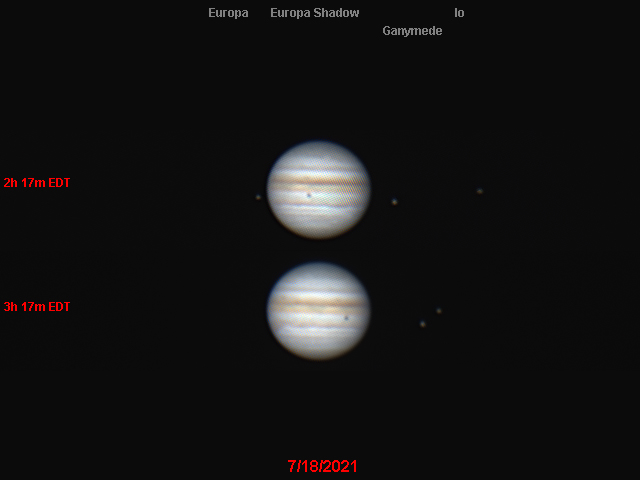
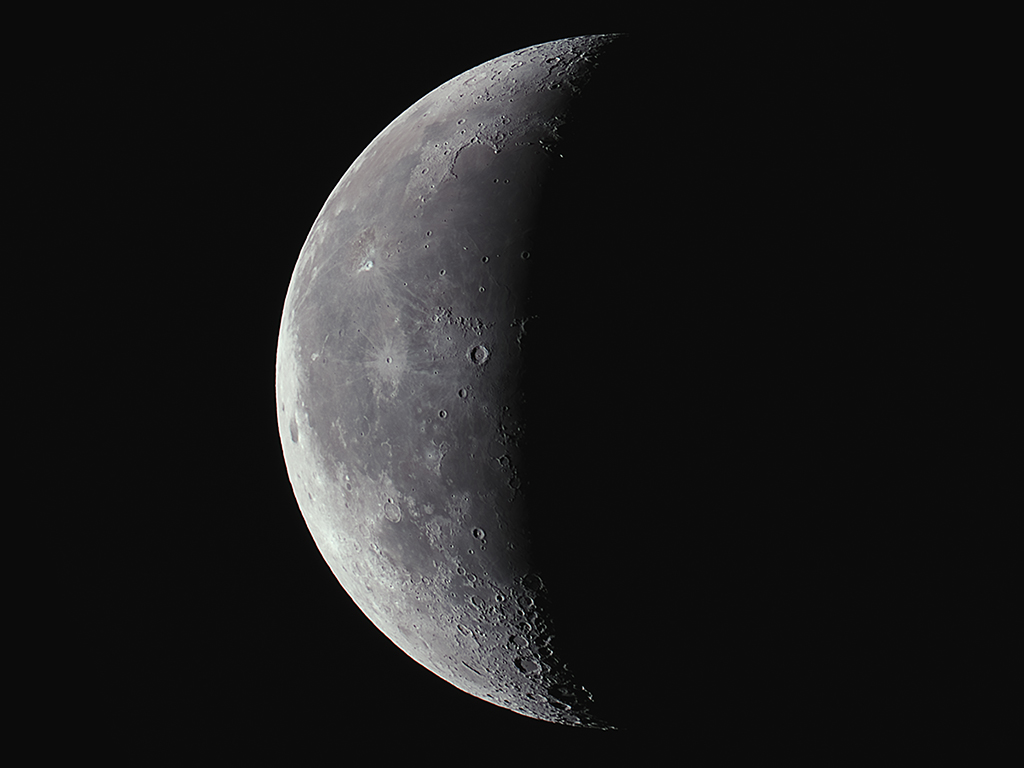
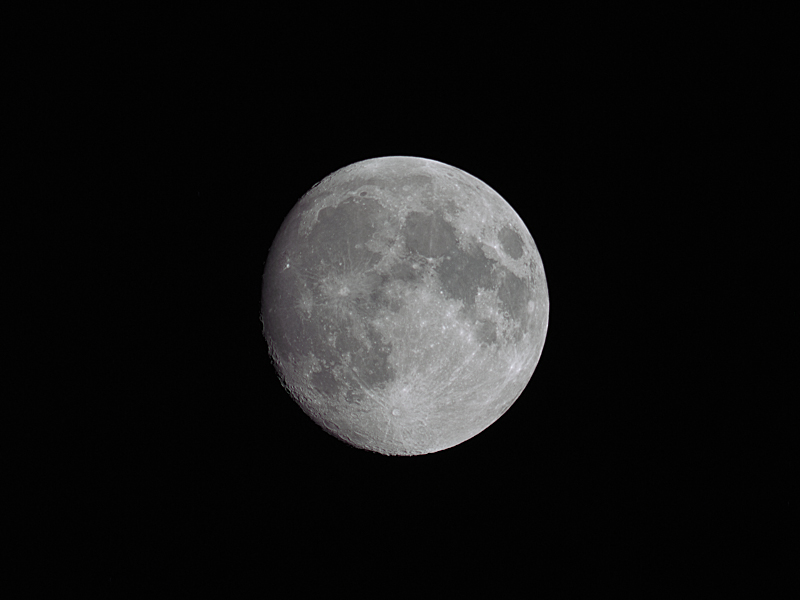
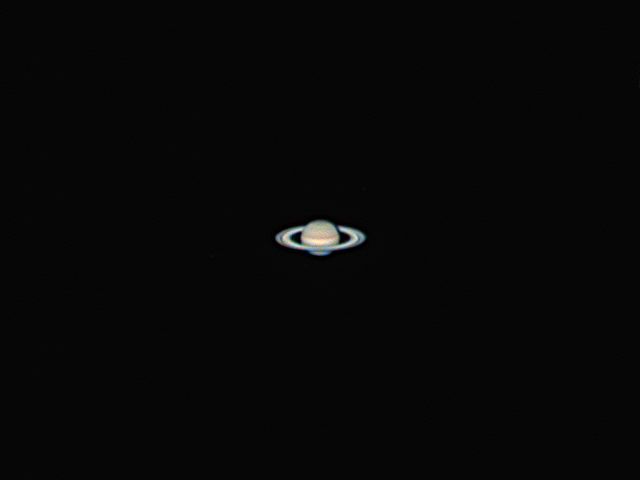
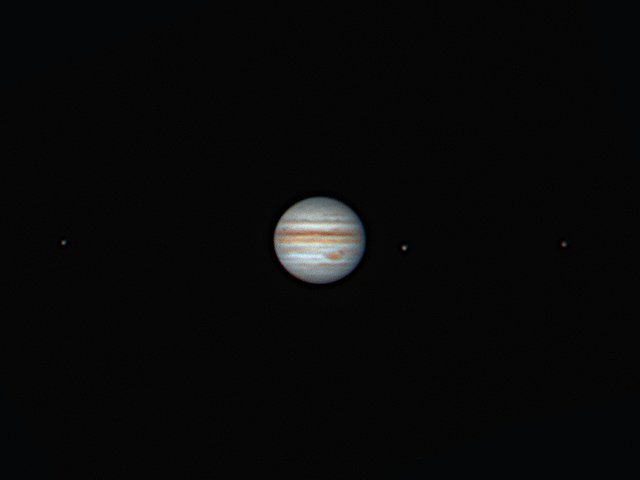
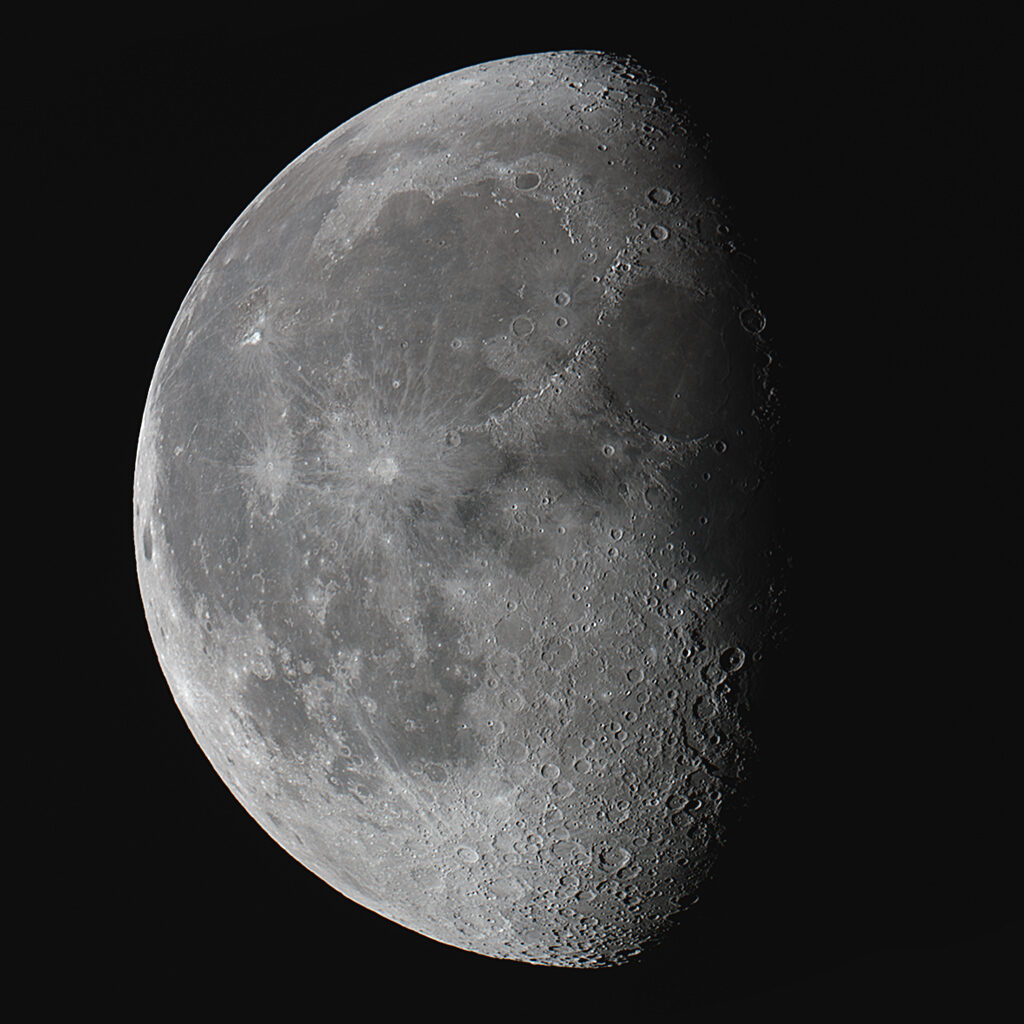
Recent Comments